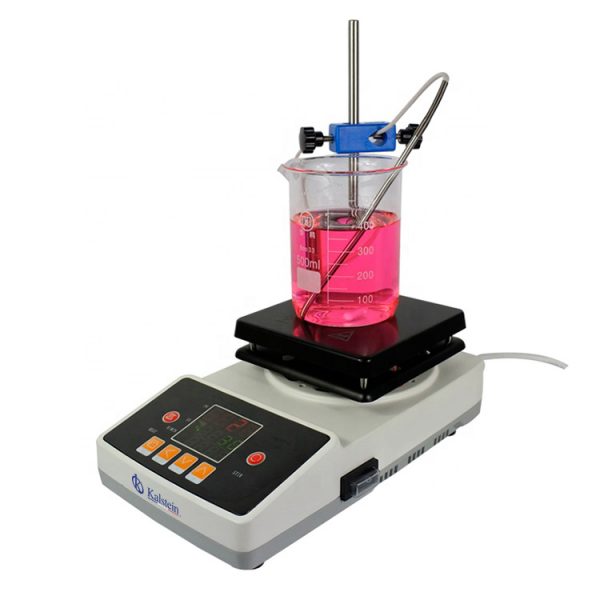A plate heater is an electric heating device used in the laboratory to heat materials to a specific temperature. The heating plate is generally composed of a flat metal surface on which the material to be heated is applied. Heat is produced by the plate’s electrical resistance to the electricity that flows through it.
Plate heaters are used in a wide range of applications in the laboratory, from heating chemical reagents to cooking food. They can also be used to melt metals and/or melt glass, as well as to heat samples for thermal analysis.
Heating Plate Optimization
The heating of the plate is produced by the electrical resistance of the plate to the electricity flowing through it. This means that heat is generated at the surface and dissipated mainly by radiation and convection. Heaters can also incorporate one or more heat dissipation fins to help dissipate heat from the board to ensure safer and more efficient operation.
A laboratory heating plate can be optimized by using a thermostat to control the surface temperature of the plate and can be adjusted to keep the plate temperature in a safe range for the material being heated. Also ensure that equipment is level to prevent material from spilling.
Other measures that can be taken to optimize the use of a laboratory heating plate include the use of glass containers to heat materials, as well as the use of plastic or wood spatulas to mix or remove materials.
In general, it is recommended that the user be familiar with the operation of a board heater before using it. It is important to follow the manufacturer’s instructions and to observe the safety precautions listed.
Improvement Techniques
Although heating plates are a very useful tool, they can be a source of energy waste if not used efficiently. Fortunately, there are several techniques that can help optimize the use of the heating plate, increasing efficiency and reducing energy consumption.
The first optimization technique is to make sure that the heating plate is level. A heating plate that is not level may be more inefficient, as heat can be distributed in an equivalent manner and will help ensure more uniform and therefore more efficient heating.
It is also important to make sure that the plate is located close enough to the liquid or solid to be heated, but not too close, as this can lead to improper heating. In general, it is recommended that the heating plate be located at a distance of about four inches from the liquid or solid. It is important to select a heating plate size that matches the amount of liquid or solid to be heated.
Once these steps have been taken, the heating plate will be ready to be used more efficiently. Using these techniques can reduce energy consumption and the cost of heating, resulting in significant savings in the laboratory’s budget.
Kalstein brand heating plate
In this category, our users will find the appropriate accessories for all the equipment they want to use. This includes a wide selection of heating plates belonging to the YR series. Digital display of temperature and speed, heating temperature: Rt-380 degrees and mixing speed: 100-1800 RPM. Heat and corrosion resistant aluminum alloy housing for durability. Adjustable temperature and rotation speed.
For more information, we at Kalstein are manufacturers of the best Heating Plates, and for this we invite you to review our catalog HERE we have the best advice, so that your purchase is the ideal and at favorable prices. Visit HERE

